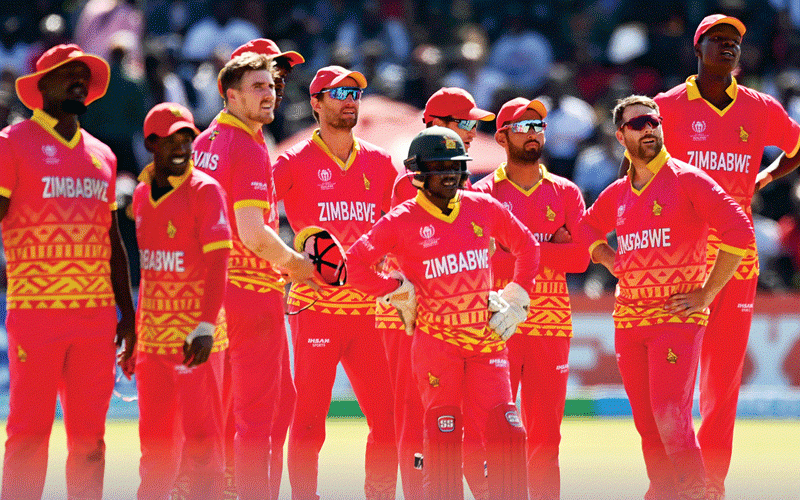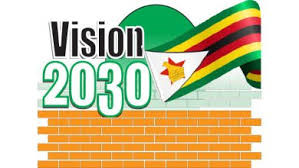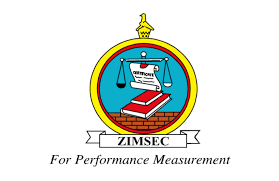
RECITING what was to become a famous speech during the inaugural Laureus World Sports Awards, held at the Sporting Club in France on May 25, 2000, the late former South African President Nelson Mandela said: “Sport has the power to change the world. It has the power to inspire. It has the power to unite people in a way that little else does . . . ”
In recent times, cricket has proved to be a unifying factor among a lot of sports-crazy Zimbabweans even though their favourite team — the Chevrons — have not been able to conjure up as many regular victories in tests, one-day internationals (ODIs) or even T20 Internationals as they would want them to.
Such has been the woeful performance of the Chevrons on the international front of late, that even the ability of an understrength, inexperienced Irish team to stage an impressive recovery on their way to beat Zimbabwe by four wickets in a one-off test at Stormont Cricket Ground on July 28 is a result that did not surprise many.
That Zimbabwe, with its proud cricketing history and better results internationally than Ireland, can be taken to the sword by a country still finding their feet on the test arena is a pill that was very bitter to swallow for me and many others waiting for something of a Chevrons renaissance.
As things stand, our national cricket side is still miles away from the standards set by previous Chevrons teams made up of the likes of Andy Flower— a test batting genius who at the height of his prowess rose to become the best in the world — Neil Johnson, Henry Olonga, Mpumelelo Mbangwa, Murray Goodwin, to mention a few.
Such comparisons will always be there, particularly for older Chevrons fans lucky enough to watch a full-strength England, boasting the batting prowess of Nasser Hussain and Alec Stewart as well as the much-feared fast-bowling duo of Chris Silverwood and Darren Gough being whitewashed 3-0 in a ODI series during their tour of Zimbabwe between December 15, 1996 and January 3, 1997.
This was after England had been held to a 0–0 draw by Zimbabwe in a two-match test series that kickstarted the tour.
One of the major highlights of the ODI series was the devastating bowling performance of former Chevrons speed merchant Eddo Brandes, whose 7 wickets, which included the first ODI hat-trick for Zimbabwe in the third match, sparked wild celebrations at Harare Sports Club and beyond.
- The art of effective communication
- The art of effective communication
- An enduring 61-year-long love affair in a sea of divorce cases
- Zim Cricket sitting on a jackpot
Keep Reading
Such comparisons will always be made, particularly for older fans lucky enough to watch both India and South Africa being defeated by Zimbabwe during the 1999 Cricket World Cup as the Chevrons stormed into the prestigious Super Sixes stage of the competition before narrowly missing out — to New Zealand — on a semi-final place.
One of the major highlights of that unforgettable era for Zimbabwean cricket was the Chevrons’ ability to register at least one ODI series victory against every other test-playing nation except India and Australia.
But all that is history and while the current Chevrons side might not be as good as that golden generation of players, Zimbabwe Cricket (ZC) has certainly made tremendous progress to ensure that the sport is accessible to more black players than before.
To appreciate this achievement, one just has to consider the racial composition of the current Chevrons team and compare it with any of the previous sides.
It is a pity, however, that over the years the significant progress made by the likes of Tavengwa Mukuhlani and Givemore Makoni — the ZC chairperson and managing director, respectively — in making the sport more popular among children living in high-density areas and laying the ideal foundation for more competitive domestic leagues is not being reflected on the field of play by the Chevrons in any of the three formats of the game.
But the good work of the duo and the people they lead has not gone unnoticed and is probably why Mukuhlani is now a member of the International Cricket Council (ICC) finance and commercial affairs committee.
It is also probably why ICC, the world governing body of the sport, is likely to award ZC the right to stage more 2027 Cricket World Cup matches than they did when they first hosted the showcase in 2003.
In fact, ZC is sitting on a million-dollar jackpot.
The completion of the Mosi-oa-Tunya International Cricket Stadium — under construction in Victoria Falls — will definitely pave way for ICC to award more matches to Zimbabwe, who are already assured of a significant chunk of money as a full participatory member country.
Allow me to put this into context.
During the 2003 Cricket World Cup, Harare Sports Club and Queens Sports Club — Zimbabwe’s internationally recognised cricket venues each hosted three matches, while the rest of the games were played in South Africa and Kenya as the tournament was staged on African soil for the very first time.
That historic tournament, which might also be remembered by many for the boycott of the England and New Zealand teams over political and security issues, saw Zimbabwe receiving around US$7,8 million from ICC.
An additional US$2,2 million was realised by ZC from the tournament itself through proceeds related to merchandising and gate takings.
Now, with a third international cricket venue in the form of the Mosi-oa-Tunya International Cricket Stadium on the cards, coupled by an impressive track record of hosting many international tournaments from 2003 to date, Zimbabwe is likely to be allocated more matches, translating into increased revenue flows for ZC this time around.
Eight facilities in South Africa have already been confirmed and earmarked for the majority of the matches to be played during the 2027 World Cup while the ICC is yet to make any other pronouncements regarding the venues to be used in Zimbabwe and Namibia.
However, the Mosi-oa-Tunya International Cricket Stadium, which would accommodate 10 000 spectators, will be “test driven” for international standards in 2026 as one of the venues of the U19 Cricket World Cup, to be co-hosted by Zimbabwe and Namibia.
Once complete, the stadium, apart from enhancing ZC revenues, is also expected to enhance sports tourism in the region.
The facility will include a playing field, practice nets, scoreboards, broadcast and media centre, changerooms, hospitality facilities, grandstand and other spectator areas, all blending into the surrounding forest and connecting with the context of the Victoria Falls resort town.
Construction activities at the stadium are expected to be completed by August 2025, after which the turf, for both the 2026 U19 Cricket World Cup as well as the men’s World Cup the following year, will be laid.
Hopes remain high that the foresight and impressive administrative acumen of ZC will become a springboard upon which the national cricket team can rise from the ashes and unite the country more by becoming an international force to be reckoned with again.











